Gal Oya National Park: Meet the Last Indigenous Cave Dwellers of Sri Lanka.
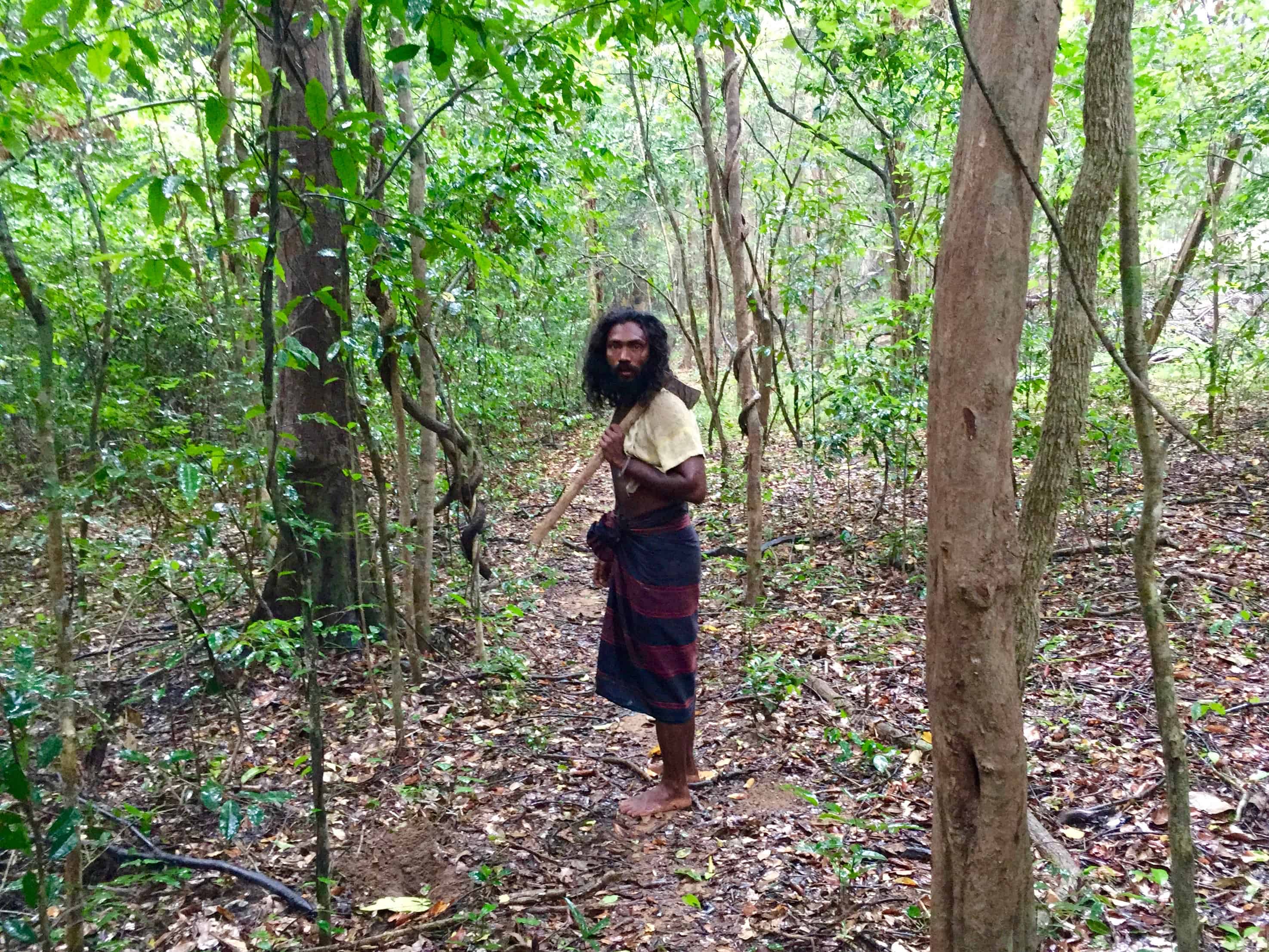
In Gal Oya National Park, a fascinating encounter with the Vedda tribe and the poachers turned conservationists at Gal Oya Lodge.
The first thing I noticed about him was the fresh blood stain on his shoulder rag. That must be from breakfast, our naturalist mused, not really joking.
Under an ominous grey morning sky, we tried keeping up with him as he scampered through overgrown wilderness, crossed a stream and scrambled up slippery rocks to the top of a hill with a natural cave.
This was home, he said in Sinhalese, and revealed his beetle-stained teeth in a wide smile. He was the son of the chief of the Vedda tribe – the last surviving indigenous forest dwellers of Sri Lanka.
Also read: Lessons on the Art of Living in Sri Lanka’s Hill Country
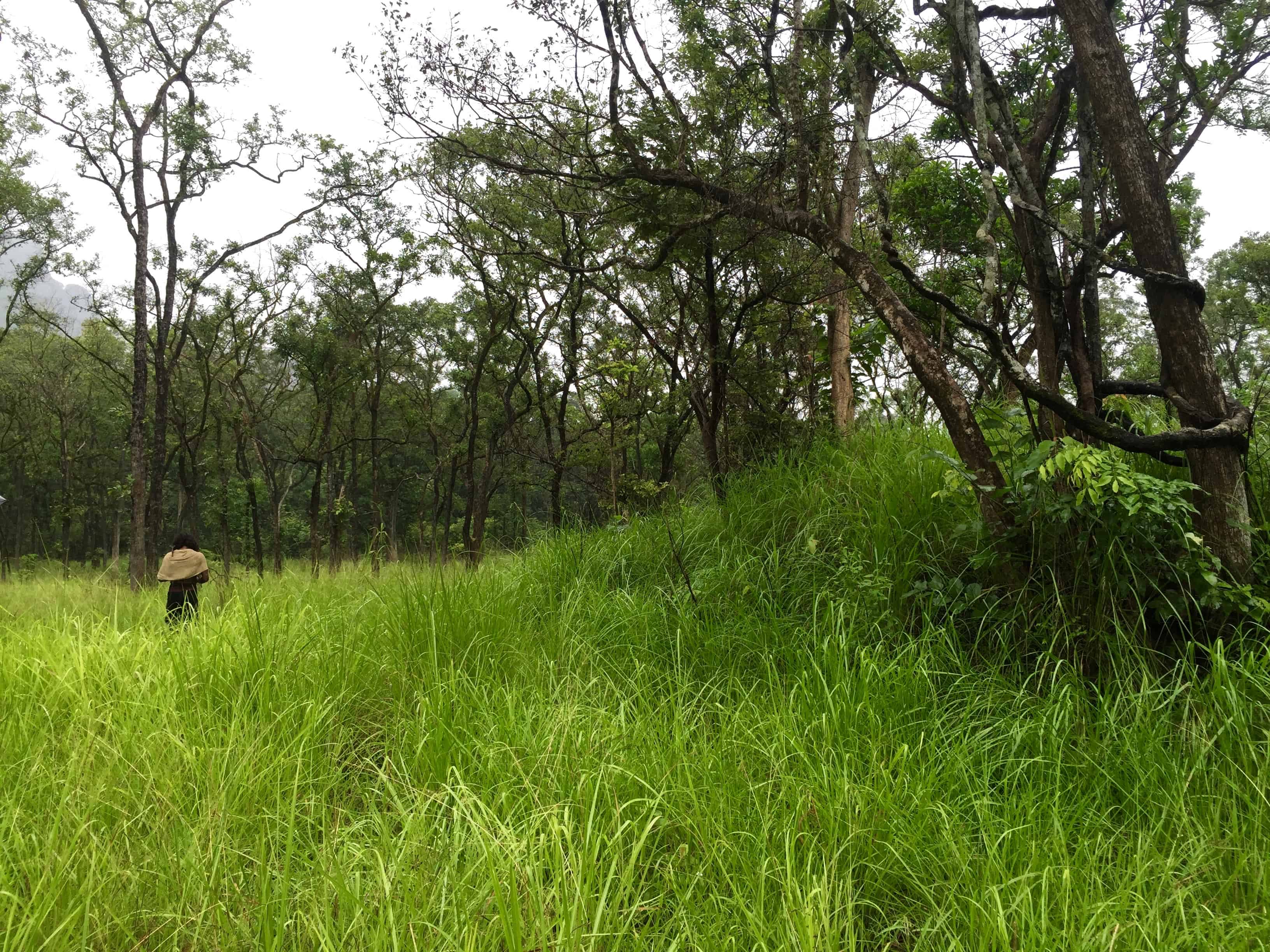
He casually flipped his black, curly hair and let them fall messily on his shoulders, almost forming a crown for his short, lean figure. He walked barefoot, wearing nothing but a loincloth around his waist and a worn-out axe resting hands-free on his shoulder rag.
And that’s the kitchen, he pointed vaguely to a rock, carelessly crushing betel nut in his palm.
Confused, I turned to our naturalist, who asked me to come closer, and had me stare down a precariously cut hole in the rock. Filled with wild honey, this is how the Veddas preserved meat.
Also read: Chhattisgarh: Tribal Life, Motorcycle Adventures and a Lingering Sadness
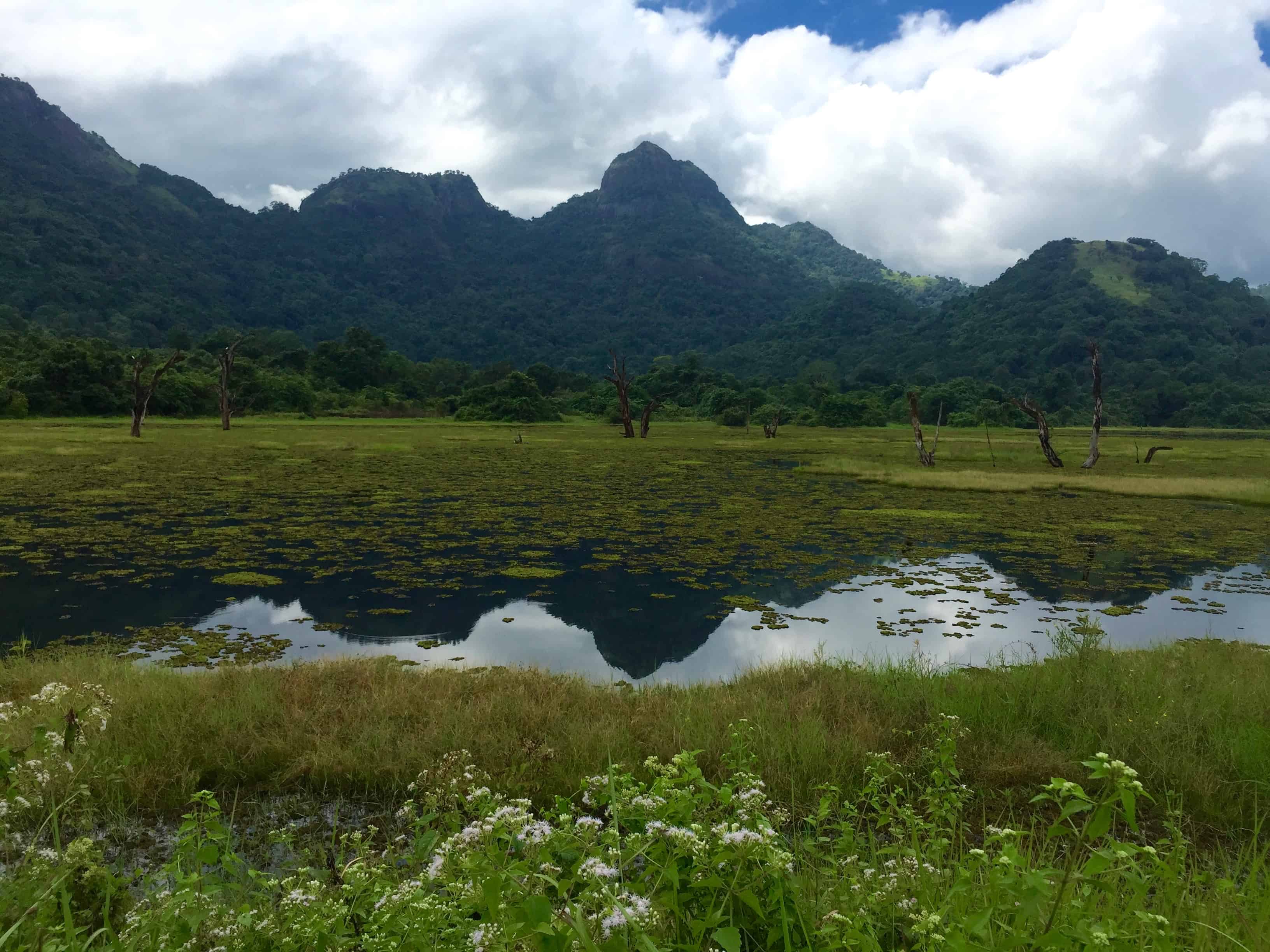
Deep within the forests of Gal Oya National Park, the Vedda people lived for centuries, hunting wild animals yet living in harmony with nature.
Then a few decades ago, the government incentivised the Vedda men and women to move out of their caves to mud houses at the edge of the forest and send their children to tribal schools. In an attempt to support their traditional ways, the government gave them permission to hunt wild animals like they had always done – but only using traditional bows and arrows!
While some older Veddas continue to live in their cave homes, most younger ones grew up in caves but now live in mud houses. They send their kids to school, speak their own language but also fluent Sinhalese and have grown to enjoy rice and curry along with honey-cured meat.
Also read: 7 Epic yet Affordable Airbnbs in Sri Lanka
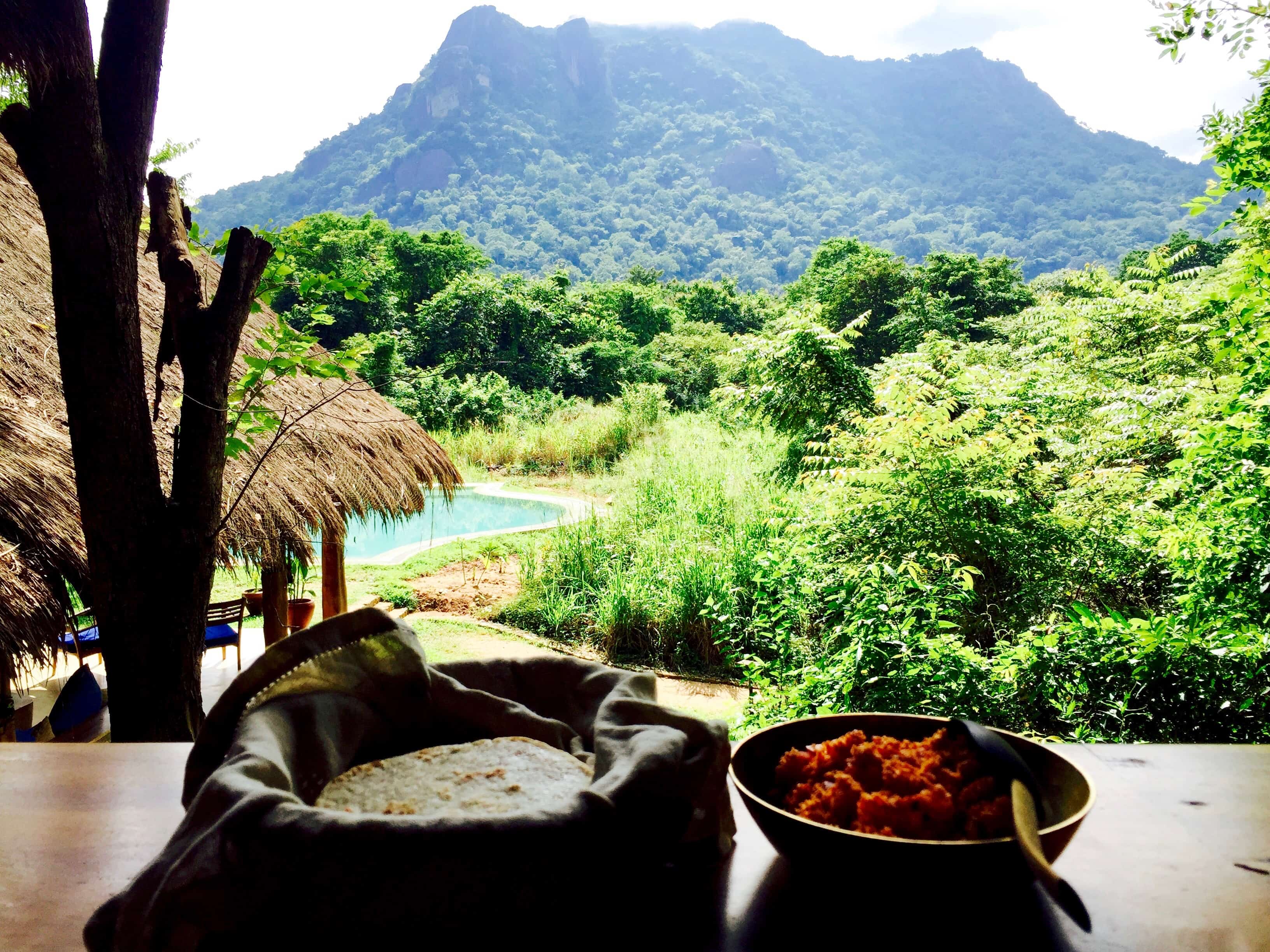
What about wild elephants? I asked, for that’s what had compelled us to make the 4 hour journey. We took the only local bus from Kandy, and journeyed on broken roads towards the remote wilderness of Gal Oya National Park, near Sri Lanka’s east coast .
Turns out, the Veddas can feel a wild elephant’s presence for miles, even smell it the wind!
In a local paper, I would later read the unbelievable tale of a Sinhalese forest surveyer who had spent months in the 1970s tracking wild elephants with help from the Veddas. They always walked with the wind in their faces so the Veddas could sniff out any elephants approaching them and change direction accordingly.
Also read: Galkadawala: Sri Lanka’s Best Kept Secret
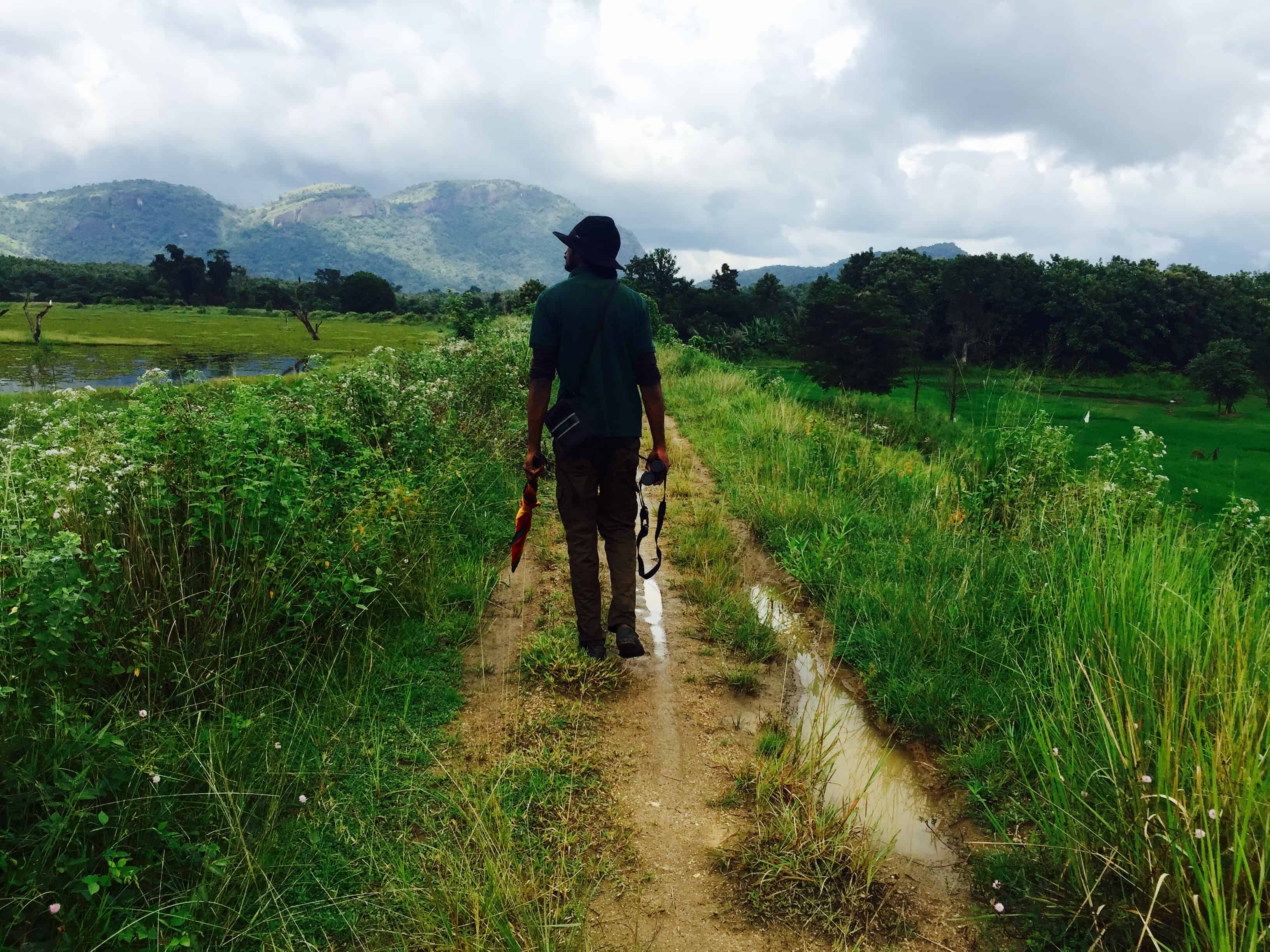
As we were about to say goodbye, I asked our tribal friend if his people still play their traditional music. He nodded, then casually walked away into the forest.
Later that night, while having dinner at Gal Oya Lodge, an elderly Vedda silently entered with a flute. Apparently he had made it that very evening using local wood, on hearing of my curiosity about their folk music!
He sat in a corner and played soulful tunes passed down by his forefathers. Tunes they used to create harmony with wild animals.
In those moments, as his music flowed through my veins, I felt a strange sense of sadness about the erosion of man’s connection with nature. Indeed, the forest traditions of the Veddas will likely disappear with this generation. But as a city dweller who seeks modern comforts, who am I to judge?
Also read: Sri Lanka Visa for Indians: Tips and Requirements
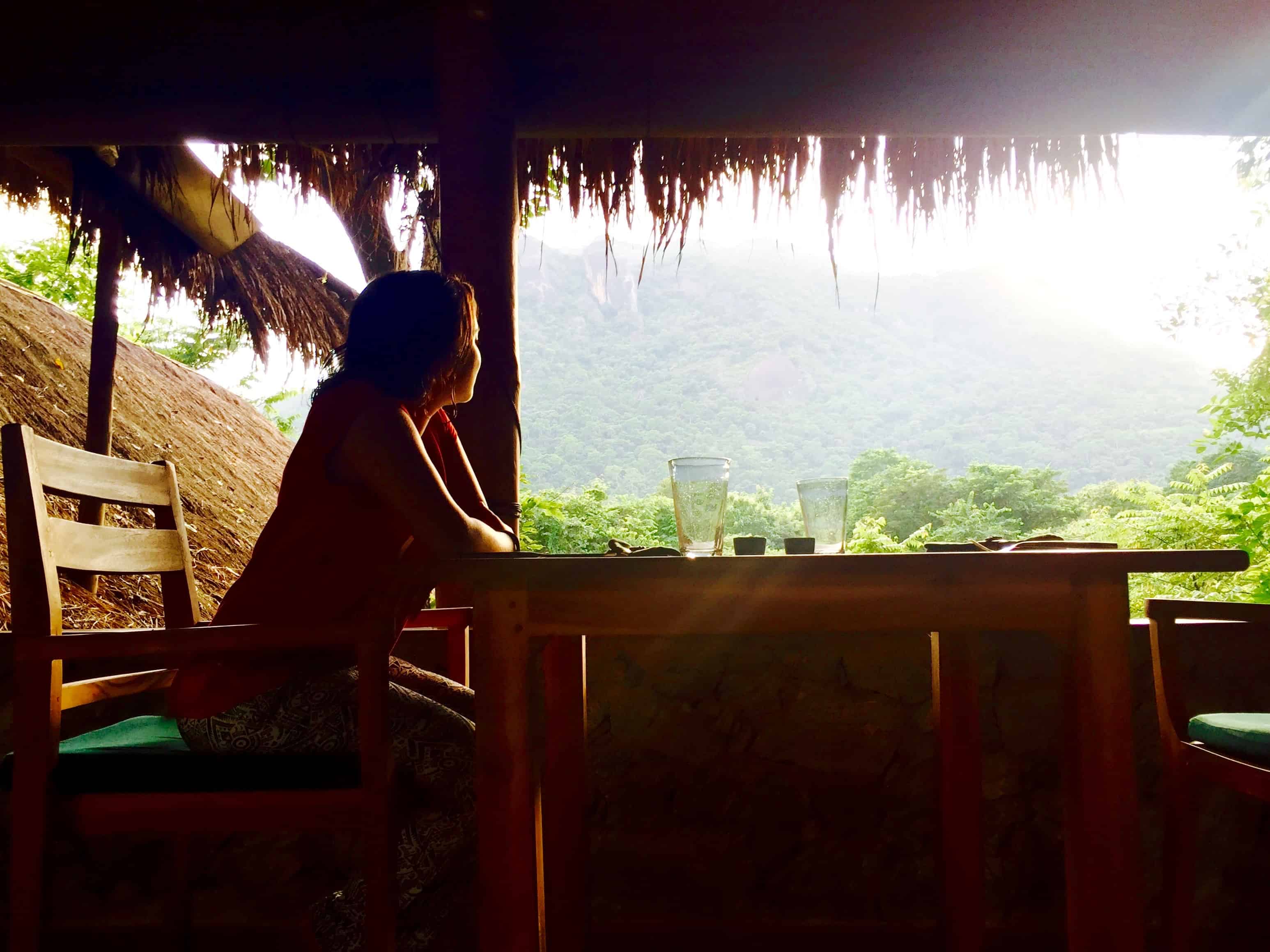
The next day, we hopped on a boat safari on Senanayake Samudraya, Sri Lanka’s largest manmade lake in Gal Oya National Park.
When the lake split the forest, the native wild elephants taught themselves to swim from island to island in search of food!
Much to our amazement, we spotted two wild elephants on a tiny island on the far side of the lake. Presumably waiting for the post-rain water level to subside before continuing their island hopping.
Also read: In Photos: Chugging Up Sri Lanka’s Hill Country
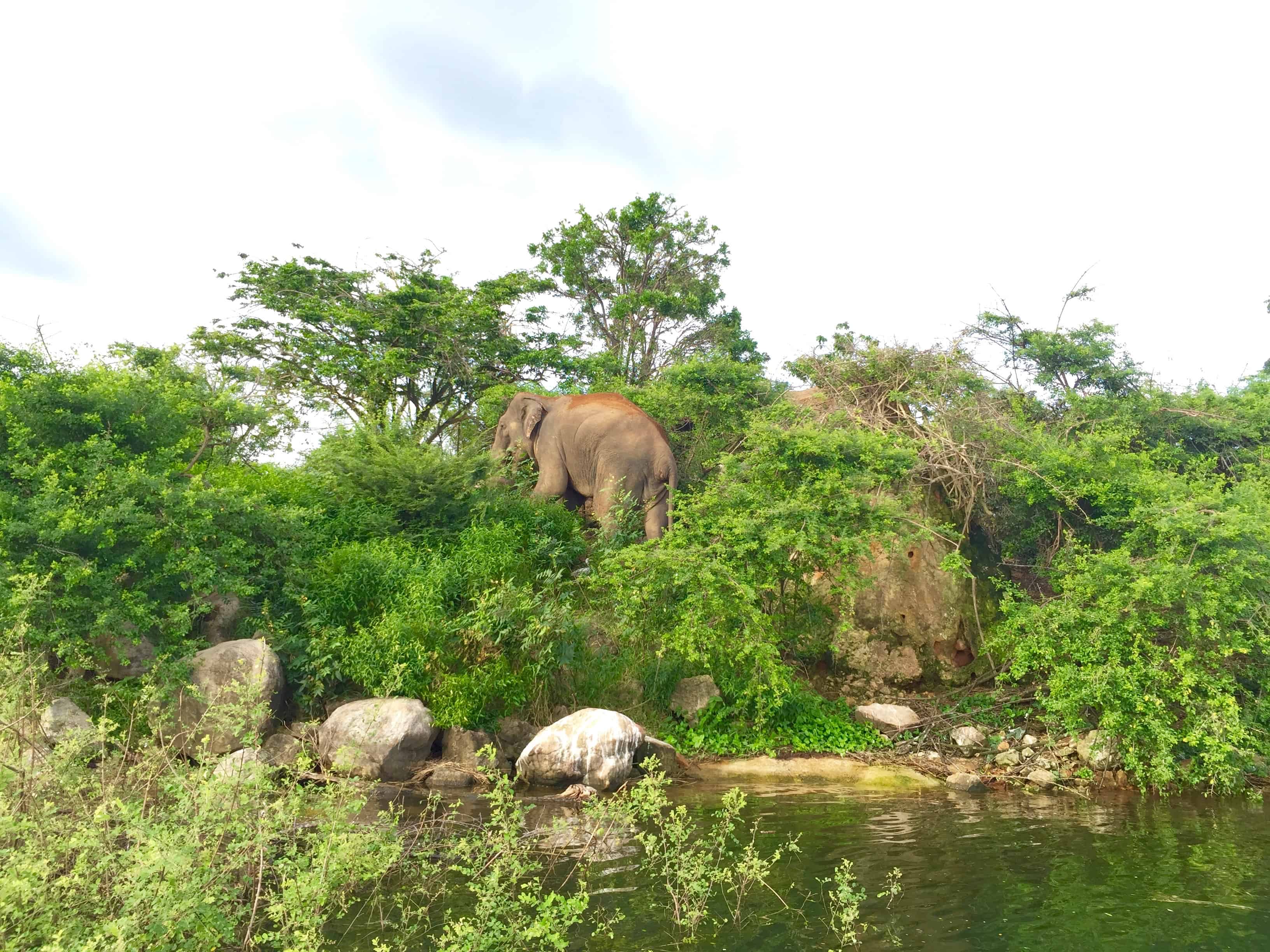
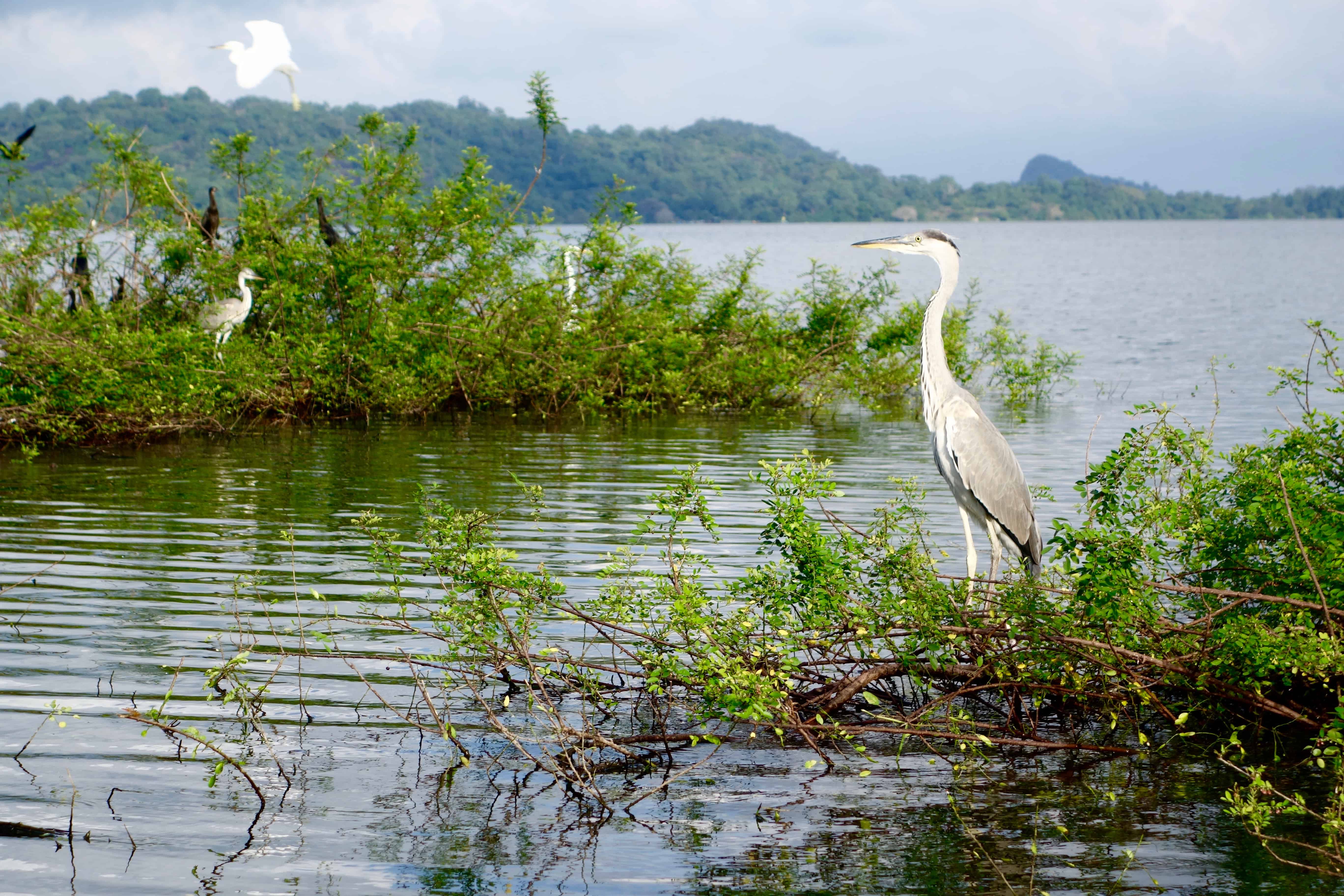
We already saw how Gal Oya Lodge, our luxurious refuge in a private 20-acre forest, is bringing into the limelight the way of life of the Veddas.
But we’d later hear about their brilliant attempt at the conservation of wild Asian Elephants. The lodge hired some of the park’s most notorious poachers as their staff. Not only do they know the forests (and the movement of other poachers) better than anyone else, they also act as the park’s guardians since their living now depends on it.
Also read: What India (and the World) Can Learn from Sustainable Tourism in Kerala
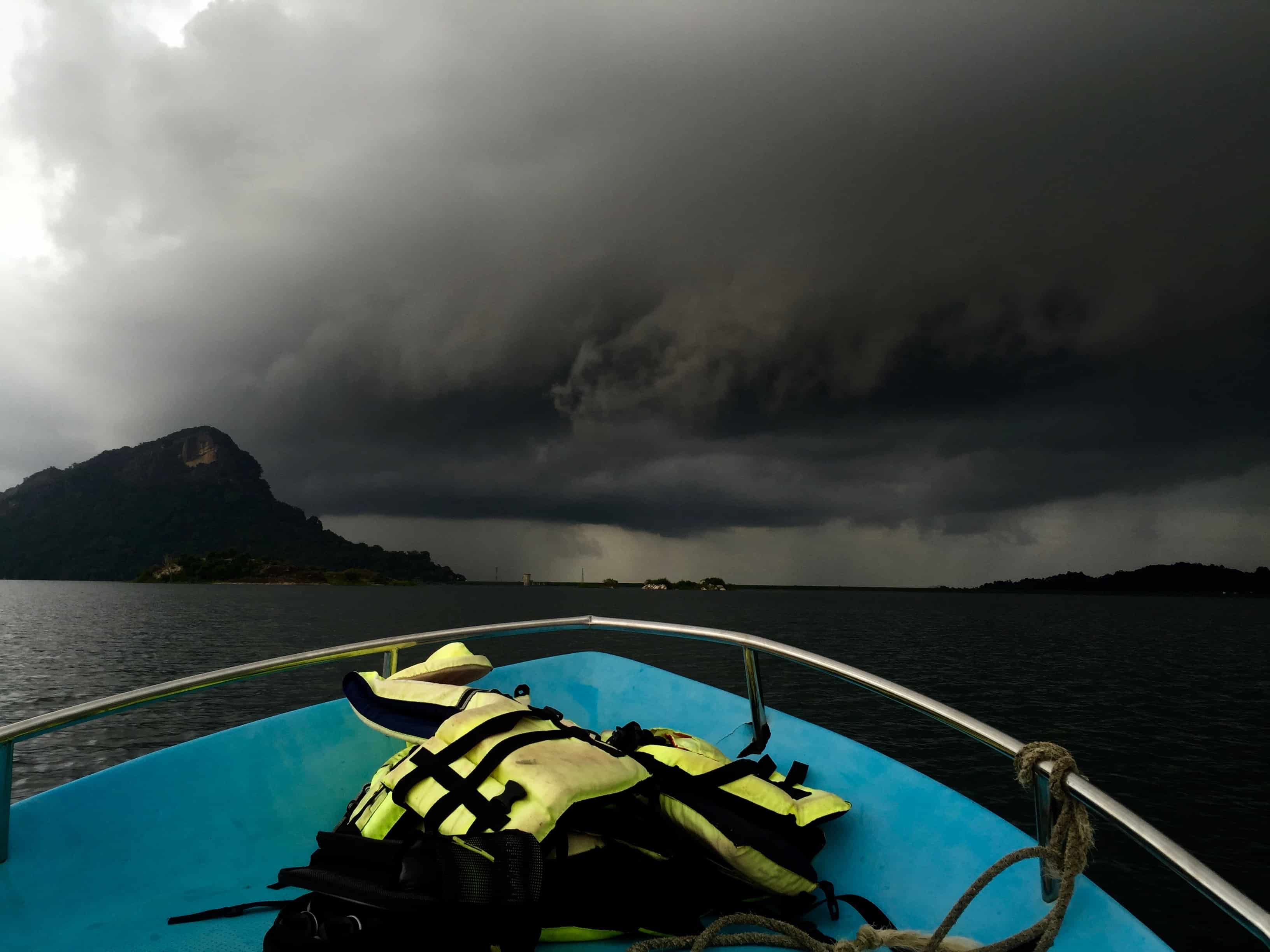
Back at the lodge, as I took a cooling dip in the dramatic backdrop of an elephant-shaped peak, I was filled with a sense of fascination. What other secrets might the forests of Sri Lanka harbor?
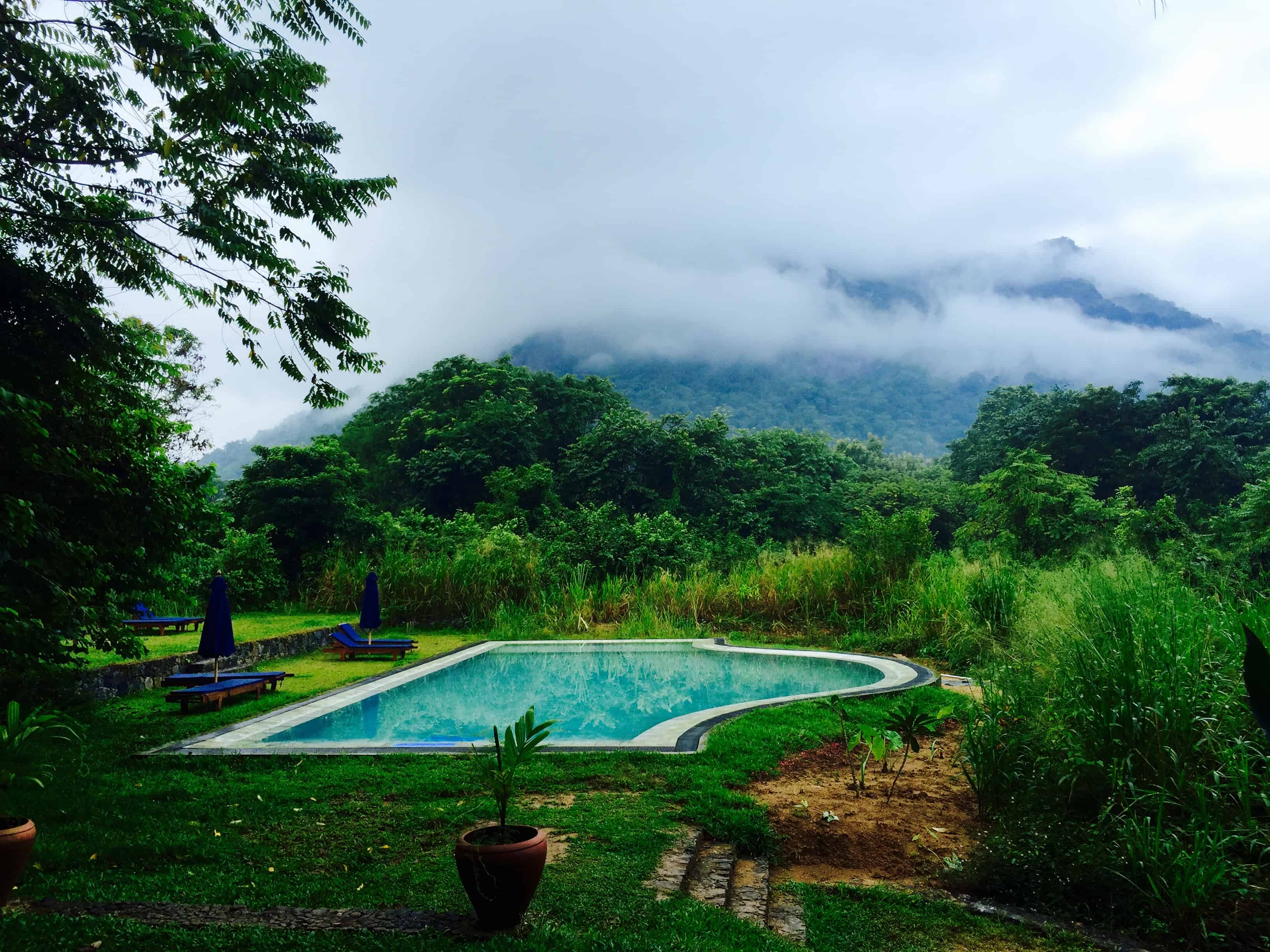
Gal Oya National Park, Sri Lanka: Travel Tips
How to get there
The nearest big city is Kandy. Take the local bus from Kandy to Ampara via Bibile to get there. We caught a bus at 11 am, but check the local timetable for updated timings.
Stay at Gal Oya Lodge
Gal Oya eco lodge – built with locally sourced natural materials on the principles of responsible travel – is the only accommodation in the vicinity of Gal Oya National Park. They work closely with the local communities and on conservation issues. We absolutely loved our stay there and hope to go back someday.
Gal Oya National Park safari
Gal Oya is probably one of the world’s most unique national parks in that it can be explored on the water! The Gal Oya boat safari on the stunning Senanayake Samudra lake is a once-in-a-lifetime chance to witness wild elephants swimming from island to island. If you’re lucky, you might even spot a leopard, sloth bear or macaque in the forest.
Have you encountered indigenous ways of life on your travels?
Note: We were hosted on these adventures by Gal Oya Lodge. Lucky us!
Hi there! I’m Shivya, and I started this travel blog back in 2011, when travel wasn’t trendy, Instagram didn’t exist and AI wasn’t a thing (simpler times, I know!). I write about slow, meaningful and conscious travel – that is good for us, the places we visit, the people we meet along the way, and the planet at large. Settle down, grab a cup of tea, and read stories that remind you of the essence of travel. I’m so glad you found me!


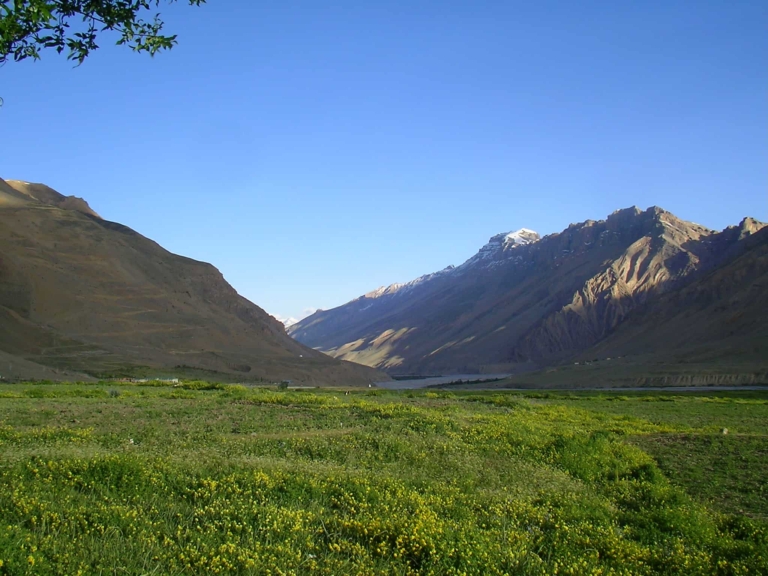
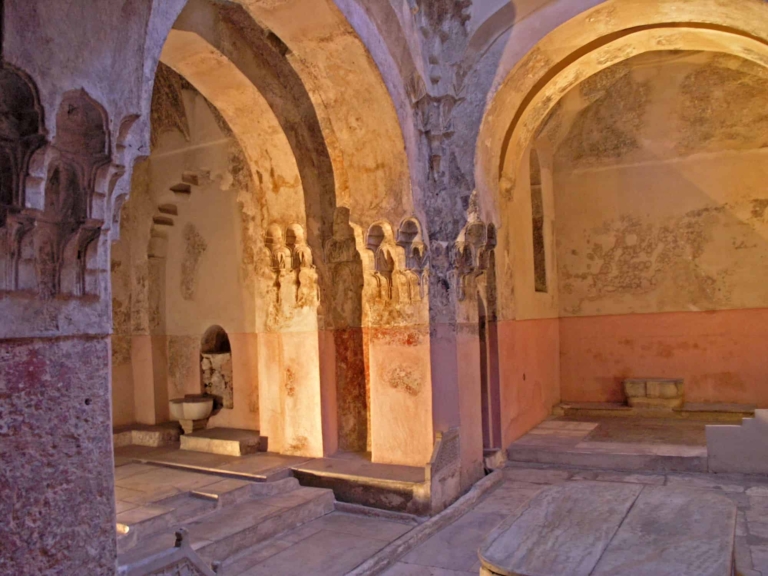
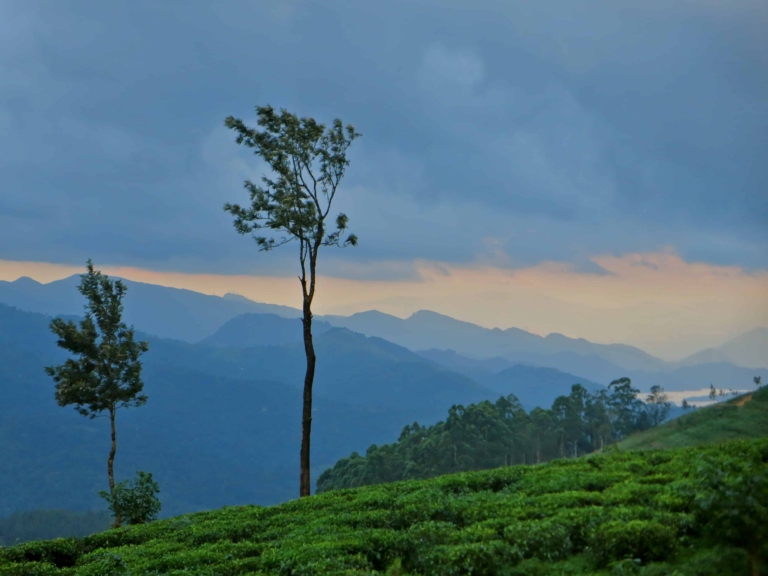
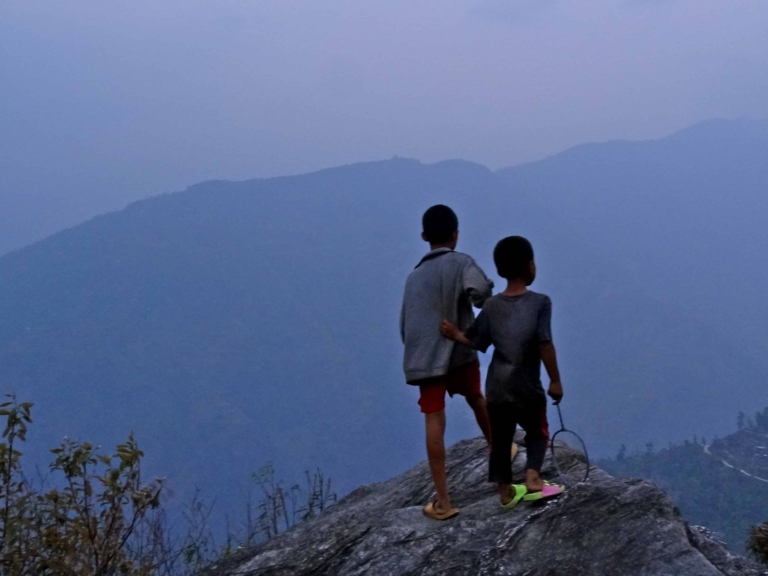
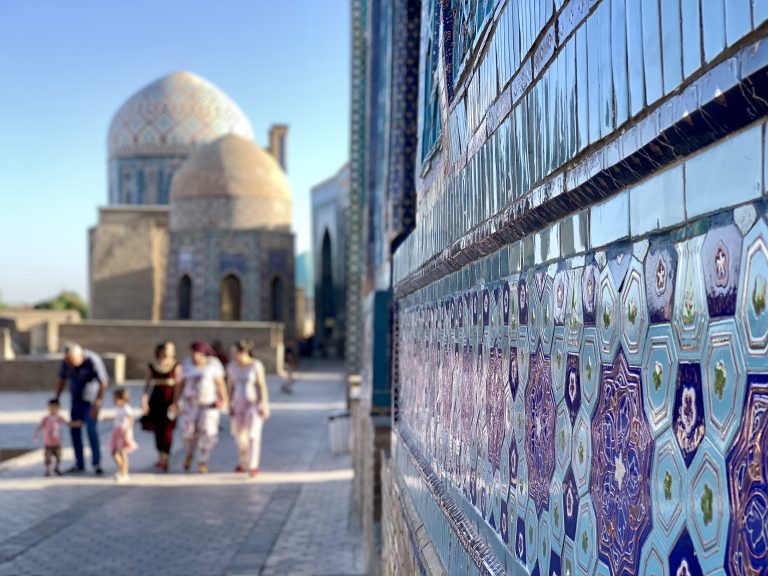
What an adventure!
You bet!
How incredibly neat that this lodge was able to take poachers and turn them into conservationists. This tells us that poachers are not evil by nature, that they are just trying to survive. If more places can follow suit, we could see serious declines or even the end of poaching. How inspiring. 🙂
I also love your bit about being a city-dweller who also longs for connection with nature. It’s really difficult to reconcile those two parts of ourselves…the part that really wants to be surrounded by greenery and smell the air, and listen to the birds… and the part of us that wants free Wi-Fi everywhere we go!
Indeed, right? I’ve read about eco-lodges and national parks using this mode of employment for conservation before, but experienced it first hand for the first time. Pretty incredible.
And yes, you nailed it. I want nature, but I also want my life as a digital nomad 😉
I remember my evening in the Dhaani(Mud Houses) and the tea made freshly from milking the She Goat in a desert small village near Osian, Rajasthan(2014).I cherish my splendid time stuck serendipitously in Jang village near Tawang at West Kameng, Arunachal(2007). I reconcile my underpreparedness when my boatman asked me to get off the boat stuck in weeds due lack of buoyancy in a oxbow lake of Ganga at Chupi, West Bengal
Those sound like quite the adventures Amitava!
What an interesting trip! I like the way you describe the people you met.
It was indeed, and thanks 🙂
AWE. First I thought I was reading some fiction! It took a while to digest. Well crafted piece 🙂
Thanks Dipika, it sure did feel like fiction!
It’s amazing how one idea that comes up from an honest intention can do so good. What a heartening story of poachers turned into protectors! Wonderful story!
Heartening indeed. I recently took a boat ride in Kerala with ex-sand smugglers! Goes to show that people want honest livelihoods if given the chance.
Sri Lanka looks beyond beautiful! Love reading your travel stories and pics. Amazing! 🙂 🙂
Thanks Karmughil! Hope you’ll get to experience it for yourself sometime.
Sure. Will have to definitely try Sri Lanka once! 🙂 🙂
Welcome to Sri Lanka Shivya,This is your 3rd visit I feel.Hope you have a very enjoyable and memorable stay in SL.Rohan
Thanks Rohan; it was my second trip, though it felt like going back home. Love the country!
Wow, this is a fascinating post. I love Sri Lanka. Thanks for sharing your experience. I hope the Veddas can preserve their culture and way of life.
Thanks! I think their culture and way of life is already on its way out, but hopefully they can preserve atleast the memories, with some incentives from responsible tourism in the area.
Wow your travels in sri Lanka sound amazing! I like your writing style! I never knew about there being indigenous forest dwellers in Sri Lanka. Learned something new today 🙂 It is definetly a shame that the traditions of these tribes may not continue in the next generations.
Thanks, glad to hear you enjoyed my writing style 🙂 I had no idea about these forest dwellers either, until I actually made it to their home! It is a shame, but we can’t hold it against them; we all want ‘modern’ comforts and that’s okay I guess.
You are so right in saying who are we to judge. Most of the time i find myself in this dilemma, whether i want to live a wild life living as a part of nature or is it that after sometime my heart will crave to come back among the rustling of the city life i am accustomed to. And it always takes me back to the same old question we used to write essay during school time, ‘science: is it a bless or a curse?’
This place looks so serene and beautiful by the way. 🙂
I have seen so many tribal villages in orissa. And what attracts me most is how humans and nature seems entangled in this small villages. You cant separate them. And the colourful people, in spite of having so little they are always so happy.
Indeed a dilemma, Swarnali! I’m hoping to explore the tribal side of Orissa over the winter. Would love any recommendations you might have 🙂
I think i am extremely late replying this.. I have a really poor memory you see.. Thought i will do some research and tell you and then.. This happened 😄 anyway.. See i was in a place called Nabarangpur, a district town in south orissa.. Its near to Rayagada, Koraput where the Kondha tribes live.. Also you can visit the Sambalpur or Mayurbhanj district.. But a word of caution you should definitely avoid the Malkangiri area, its a highly naxalite area.. If you go to Nabarangpur or Rayagada and need any info do ping me..
Great story and such an inspiration. Keep doing what you do!
Thanks Grace!
Wow. This is something you don’t read every day. Great post!
Thanks Jacob! Certainly something you don’t experience every day either!
Great post and an intriguing one too!! You shed light on the tribes beautifully:D I think I may bring in a small correction here – it is not beetle, but “betel nut”, also called areca nut and chewing on a mixture of betel leaves and areca nut is an age old ritual in South Asia
Oops, I’ll fix that right away! (laughing at my silliness now ;-))
Being “somewhat” new to blogging, rebuilding my own site and such, it is refreshing to have found such a blog. I am excited to keep reading more of your posts! This was informative and entertaining and I absolutely love it. It is sad to know how we are slowly losing the beauty of the natural world.
I’m glad you found my blog refreshing; thanks for stopping by! I think we can preserve the beauty of the natural world while still making sure that we are all moving together towards a more comfortable way of life – it’s a fine balance though, but some countries seem to have achieved it.
All the best for your blogging adventures!
Thank you Shivya! You are awesome!
One solid reason to visit Srilanka is “ Srilanka, is a miracle”’. It is a bundle of contradictions.
Great post and an intriguing one too!!! such an inspiration. Amazing! Thanks for sharing.
Thanks for reading, Amit!
Such an inspiring travel blog, my bucket list is getting bigger 🙂
dream place to visit in nearby future. i hope i will make to this ever in my life.
Wow! That’s truly once in a lifetime kind of experience. Absolutely loved reading this post!
Its arealy awesome post in regard to travel
A slice of heaven!
Wow! What a great adventure you had!
Awesome!Takes lot of courage to venture out like that!Worthwhile experience though!
Your detailed, ethnographic style of writing is absolutely thrilling to read. It’s rare to come across writers such as yourself. Keep up the amazing work!
Wow what a fascinating experience. I’m definitely going to give this a go
Had a great trip to Sri Lanka. Check it out.
Dear Shivya, I must admit that you have a way with words. I am in total awe of your writing/ blogging. I can’t decide you travel more beautifully or write or both. I have been a solo traveller not by choice but yes decided to just go for it not waiting for things or people. But it hasn’t been always easy. You are such an inspiration and I am quite glad that your work is reaching places. I am sure you a way to go. Wishing you the best. Love your articles.
Sri Lanka’s indigenous people are fascinating. Their way of life is still very much ancient.